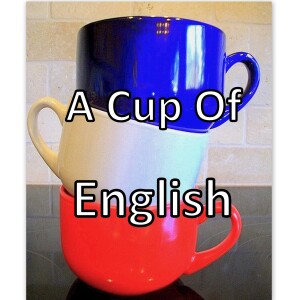
Beginners.
Scotland forms part of the United Kingdom. It is the northern most country of the group, and takes up about a third of the overall territory. Its southern border is with England. On the east side, it borders with the North Sea, on the north and west sides with the Atlantic, and southeast with the Irish Sea. Scotland also has seven hundred and ninety islands. It is famous for the Highlands, a very mountainous area where you can find the highest mountain in the U.K, Ben Nevis, sometimes called The Ben, which is four thousand four hundred and nine feet above sea level. Many people visit and climb 'The Ben' every year. There are two ways to do so: a pony track, or the much harder seven hundred meter cliffs of the north face. Scotland is also famous for its lakes, or 'lochs', of which there are many. The most famous is Loch Ness where, legend has it, there is a monster. The Central lowlands are rich in minerals, and were the center of the industrial revolution of this land. The capital, Edinburgh is found here. Then there are the Southern uplands which are hilly with many valleys. Because of its location on the globe, Scotland is temperate and has oceanic weather systems. It is changeable weather. The western side is milder and sunnier because of the Atlantic Gulf Stream. The western highlands receive over 120 inches of rain every year, and certain, mountainous areas in the north experience a lot of snow.
Advanced.
The history of Scotland is fascinating. The first settlers are believed to have built stone houses and communities about 9000 years ago. The first major invasion was by the Romans in the first century. However, the Romans didn't have a lot of luck with the scottish tribes who resisted them, first in the Highlands, and then in the Southern lowlands. The Romans built Hadrian's wall, a rock wall that still exists, partially in ruin, but that extends over the width of the northern most part of England. This was to establish control, and to protect the Romans against attacks from the scottish tribes. By the sixth century, the Kingdom of the Picks or Scotland was established, with English, Gaelic, and Norwegian settlers in the south, west, and north. The country was not yet united until about the thirteenth century. French and English influence because of immigration pushed back the Gaelic language from the south. After the last scottish king died, Alexander 3rd, and his only heir, England became involved, trying to claim a right to the land. This led to the Wars of Scottish Independence. In 1320 Scotland finally pushed out the English and formed the first declaration of independence which forced the English crown to accept their nationhood. Scotland continued to suffer wars with England, a civil war, its own James V1 king of Scots inheriting the crown of England, and then finally in 1707 the formation of the United Kingdom of Britian. Scotland now is self governing and has representation in the U.K governement.
Tweet
//
//
view more
More Episodes
Yoga please!
 2016-09-20
2016-09-20
 2016-09-20
2016-09-20
A Country Party.
 2016-09-13
2016-09-13
 2016-09-13
2016-09-13
WSU Vet Hospital.
 2016-09-05
2016-09-05
 2016-09-05
2016-09-05
Boeing: The Future of Flight 2.
 2016-08-22
2016-08-22
 2016-08-22
2016-08-22
Boeing: The Future of Flight 1.
 2016-08-19
2016-08-19
 2016-08-19
2016-08-19
Let's go with Pokemon Go!
 2016-08-03
2016-08-03
 2016-08-03
2016-08-03
An Interview at Scalar Learning.
 2016-07-28
2016-07-28
 2016-07-28
2016-07-28
A Visiting Student.
 2016-07-13
2016-07-13
 2016-07-13
2016-07-13
A better way to waste.
 2016-07-01
2016-07-01
 2016-07-01
2016-07-01
Brexit or Pumpkin Cake?
 2016-06-23
2016-06-23
 2016-06-23
2016-06-23
Soccer practice.
 2016-06-16
2016-06-16
 2016-06-16
2016-06-16
Cowboys and cowgirls.
 2016-06-07
2016-06-07
 2016-06-07
2016-06-07
Apple Blossom Heat.
 2016-05-13
2016-05-13
 2016-05-13
2016-05-13
Teacher appreciation.
 2016-05-05
2016-05-05
 2016-05-05
2016-05-05
Username and password.
 2016-04-28
2016-04-28
 2016-04-28
2016-04-28
You want to join the circus?
 2016-04-18
2016-04-18
 2016-04-18
2016-04-18
Spring Work.
 2016-04-11
2016-04-11
 2016-04-11
2016-04-11
Jumping Whales.
 2016-03-29
2016-03-29
 2016-03-29
2016-03-29
The Banyan Tree.
 2016-03-25
2016-03-25
 2016-03-25
2016-03-25
012345678910111213141516171819
Create your
podcast in
minutes
- Full-featured podcast site
- Unlimited storage and bandwidth
- Comprehensive podcast stats
- Distribute to Apple Podcasts, Spotify, and more
- Make money with your podcast
It is Free
- Privacy Policy
- Cookie Policy
- Terms of Use
- Consent Preferences
- Copyright © 2015-2024 Podbean.com





